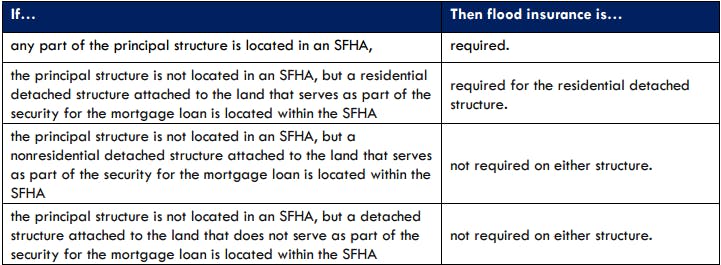Skip to content
 ITIN Secure Mortgage Program
ITIN Secure Mortgage Program
ITIN Secure Mortgage Program
Chapter 1 - General Loan File Delivery Requirements
1.1 - INTEREST CREDIT
1.1.2 - PRINCIPAL CURTAILMENT
1.1.3 - ASSUMABILITY
1.1.4 - PROPERTY INSURANCE
1.1.4.1 - COVERAGE REQUIREMENTS
1.1.5 - COMMERCIAL GENERAL LIABILITY INSURANCE: 2-4 MIXED USE PROPERTIES (If Applicable / Currently suspended)
1.1.6 - FLOOD INSURANCE

1.1.6.1 - ACCEPTABLE FLOOD INSURANCE POLICIES
1.1.7 - TITLE POLICY REQUIREMENTS
1.1.7.1 - TERMS OF COVERAGE
1.1.7.2 - EFFECTIVE DATE OF COVERAGE
1.1.7.3 - AMOUNT OF COVERAGE
1.1.7.4 - MORTGAGE ELECTRONIC REGISTRATION SYSTEM (MERS)
1.1.7.5 - OTHER REQUIREMENTS
1.1.7.6 - CHAIN OF TITLE
1.1.7.7 - CONDOMINIUM OR PLANNED UNIT DEVELOPMENTS (PUD)
1.1.7.8 - TITLE EXCEPTIONS
1.1.7.9 - MINOR IMPEDIMENTS TO TITLE
CHAPTER 2 - ITIN MORTGAGE
SECTION 2 - PRODUCT MATRACIES (12/31/22)
2.1.0 - ELIGIBLE PRODUCTS (12/31/2022)


2.1.1 - QUALIFYING PAYMENT
2.1.3 - LOAN AMOUNTS

2.1.4 - MINIMUM CREDIT SCORE
2.1.5 - SOLAR PANEL REQUIREMENTS
2.1.6 - PRIVATE MORTAGEGE INSURANCE (PMI)
2.1.7 - LOAN DOCUMENTATION
2.1.7.1 - NOTE AND SECURITY INSTRUMENT FORMS
2.1.7.2 - HYBRID CLOSING
2.2.0 - AGE OF DOCUMENT REQUIREMENTS
2.2.1 - CREDIT REVIEW DOCUMENTATION
2.2.2 - APPRAISAL
2.2.3 - CLARIFICATION
2.3.0 - BORROWER ELIGIBILITY
2.3.1 - NON-PERMANENT RESIDENT ALIEN
2.3.2 - NON-OCCUPANT CO-BORROWERS
2.3.3 - FIRST-TIME HOMEBUYERS
2.3.4 - TITLE VESTING AND OWNERSHIP
2.3.4.1 - POWER OF ATTORNEY
2.3.5 - OCCUPANCY TYPES
2.3.6 - BORROWER STATEMENT OF OCCUPANCY
2.3.7 - BORROWER STATEMENT OF BUSINESS PURPOSE (INVESTMENT PROPERTY)
2.4.0 - TRANSACTION TYPES
2.4.1 - ELIGIBLE TRANSACTIONS
2.4.1.1 - PURCHASE
2.4.1.2 - RATE/TERM REFINANCE
2.4.1.3 - CASH-OUT
2.4.1.4 - DELAYED FINANCING
2.4.2 - LISTING SEASONING
2.4.3 - NON-ARM’S LENGTH TRANSACTIONS
2.4.3.1 - NON-ARM’S LENGTH TRANSACTION
2.4.3.2 - ELIGIBLE NON-ARM’S LENGTH TRANSACTIONS
2.4.3.3 - NON-ARM’S-LENGTH RESTRICTIONS
2.4.4 - INTERESTED PARTY CONTRIBUTINS (ORIGINATOR/SELLER CONCESSIONS)
Want to print your doc?
This is not the way.
This is not the way.

Try clicking the ⋯ next to your doc name or using a keyboard shortcut (
CtrlP
) instead.